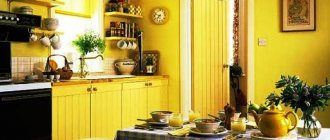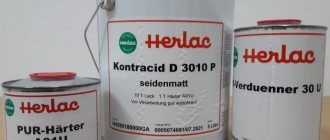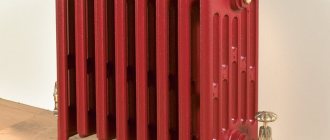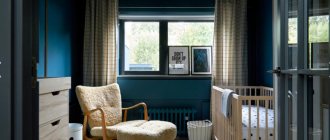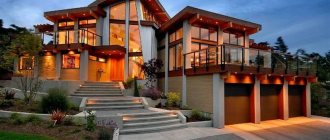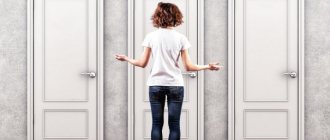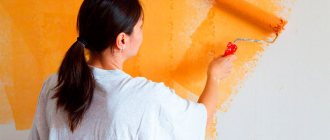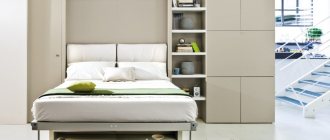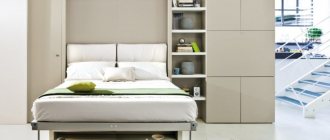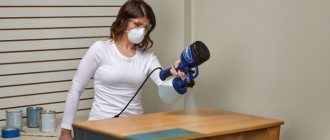Water-based paints are a water-based material with polymer components. The composition contains emulsions of polymers such as styrene-butadiene, polyvinyl acetate, and polyacrylate. Valued for technical properties, safety, ease of use.
Water-based paint.
Features of water-based paint
The main components of water-based paint are the following substances:
- Film former
- Filler
- Pigments
- Stabilizers and plasticizers
The average consumption is approximately two hundred and fifty grams per square meter. It is suitable for finishing residential premises, as well as for rooms with high traffic.
Paint is an emulsion that consists of polymer particles.
When these particles dry, they form a durable polymer film on the surface. A painted wall can be wiped with a damp cloth; the paint does not rub off and adheres well to the surface.
Silicone
They meet all modern requirements of finishing technologies, which makes them extremely popular. Most often used for painting various structures and building facades. They are characterized by excellent quality, practicality and durability. Unlike other types of paints, they contain emulsified silicone resins, which form a particularly durable water-repellent layer. Silicone paints are perfectly absorbed, fill all the cavities of existing irregularities and do not stretch the dried layer. Walls painted with silicone paint are resistant to various stains, have dust-repellent properties, and adhered dirt is easily washed off.
Advantages of water-based paint
- Easy to apply. You can apply water-based paint to the surface yourself. For small surfaces you can use paint in cans, and for large volumes of painting - in buckets.
- Affordable price.
- Water-based paint hides dark areas on the wall surface well.
- The walls are completely covered with the paint composition, there are no traces of a roller or smudges left on them.
- No pungent odor.
- Colorant for obtaining any color and shade.
- No peeling during long-term use.
- High setting speed.
Best before date
All characteristics of water-based paints are indicated on the packaging, including expiration date. The guaranteed shelf life is usually 24 months in a tightly closed container at a temperature of 0 to +40 degrees Celsius. Withstands freezing down to -25 degrees Celsius, but no more than 5 freeze-thaw cycles. It is not recommended to use paint that has expired; its properties change. Applying expired paint may affect its durability, weather resistance, and uniformity of application.
Types of water-based paint
Water-based paint contains various components, so it is divided into types according to its composition.
- Mineral paint
- Silicate
- Silicone
- Acrylic
- Polyvinyl acetate
Acrylic paint
This is the most popular and sought-after type of paint, both among professionals and ordinary consumers. The main component is acrylic resin. Acrylic paint can be applied to different surfaces, such as concrete, brick, plaster, wood and so on.
The only disadvantage of this paint is the high price, but it fully justifies its quality.
This paint withstands washing with water well, so it is considered one of the most resistant and durable. Acrylic paint dries in just a few hours and can also smooth out small cracks in walls.
This paint protects concrete from corrosion, but it cannot be used in rooms with high humidity or poor waterproofing.
Silicone paint
The main component of silicone paint is silicone resins. This paint is ideal for rooms with high humidity.
It contains a vapor-tight component that resists moisture and fungus formation.
- Silicone paint also has a high cost, but at the same time, it fully justifies its price and can even be used in bathrooms.
- Silicone-based paint not only fights the appearance of fungus, but prevents its appearance.
- Using silicone paint, there is no need to additionally treat the wall with an antiseptic.
Silicate paint
Silicate paint is considered one of the most durable, as it contains liquid glass, water and various coloring components. The service life of such paint is incredibly long, it can be up to twenty years.
- Silicate paint does not tolerate moisture, so it cannot be used for wet rooms.
- The scope of application of silicate water-based paint is quite wide; an important advantage is its non-flammability.
When applied to a wall, silicate paint forms a thin glass film, which emphasizes the depth and richness of the color.
Mineral paint
This type is gradually leaving the market, since mineral paint has a short service life.
- It contains limestone particles and is perfect for any type of surface.
- This paint is best suited for finishing brick or concrete; it is low cost and wears off very quickly.
- It is completely safe, has no pronounced odor and is used for finishing walls and ceilings.
Polyvinyl acetate paint
This is a durable, waterproof paint that is used for interior and exterior decoration. It can be applied to any surface - wood, concrete, plaster, brick, drywall, plywood and so on.
The drying time of polyvinyl acetate paint is about two hours; it is best to apply this paint in several layers. Due to its high consumption, this type of water-based paint is also considered one of the most expensive.
Advantages and disadvantages
The following advantages :
- the solution can be given the desired shade by adding the desired pigment;
- can be applied in several layers;
- clear instructions for use;
- the paint has no specific odor and is comfortable to work with;
- the application process is not difficult, tools are easy to clean from paint;
- drying occurs in 1.5-3 hours, which depends on environmental conditions;
- low consumption of color emulsion.
The downside is the temperature at which you can paint. It is permissible to work with paint provided that it is above +5°C. Low frost resistance limits its use in the cold season. Some representatives of water-based compositions require a long drying time - up to 24 hours, which the manufacturer indicates in the instructions.
Features of coloring
Before applying water-based paint to the wall, you need to prepare the walls. The walls must be smooth, the old coating must be removed, a new layer of plaster must be applied and a liquid primer must be used.
To significantly save the consumption of water-based paint, it is best to use a device such as a spray gun.
- It has a large coverage area and eliminates the occurrence of smudges.
- You can also use brushes or a roller for painting; as a rule, a roller applies too thin a layer, so you need to paint the walls in two or three layers.
- If water-based paint has dried, it can be diluted with plain water.
It is important not to make the paint too liquid, otherwise excess water will dissolve the pigments and the color will have to be added again.
How to prepare the surface before painting
The base requires preliminary cleaning, puttying, and priming. If the previous coating comes off or cracks, it is better to remove it or partially clean it. In the case of old water-based emulsion, it is enough to actively moisten it 2 times with an interval of half an hour. Then you need to create a draft. Soon the old paint will bubble up. This is easy to remove with a spatula.
If old lime is removed, you can apply a paste of water and flour to it. It will adhere to the lime. This layer can be easily removed with a metal spatula. The paste is made by diluting flour first in a small amount of cold water, and then the resulting slurry in boiling water. If you have a grinding tool, it is more convenient to remove the whitewash with it. If there is rust on the cleaned base, it is removed with a mixture of drying oil and lime, or “White”.
Popular manufacturers
Water-based paint from a trusted manufacturer is the key to successful repairs, since high-quality paint will give an excellent result.
- Tikkurila. One of the most environmentally friendly and durable paints on the market.
- Dufa. It has a high cost, but the highest quality parameters.
- Dulax. Also offers high quality paint.
- Snowball. Inexpensive paint with a rich palette of colors.
- Lakra. Good quality paint at an affordable price.
Varieties
Acrylic paints are universal because they are available in several versions, each of which has its own purpose:
- Washable. Withstands from 1500 to 3000 wet cleaning cycles. Contains latex to resist moisture. Great for use in kitchens, bathrooms and kitchens.
- Atmospheric. Designed specifically for exterior painting work, they are characterized by increased resistance to external negative weather phenomena, including precipitation, high and low temperatures.
- Internal. Designed for interior decoration. They are characterized by high service life and abrasion resistance.
- Facade. Used for painting building facades. They are an excellent alternative to more expensive siding.
The choice of variety is directly determined by what surfaces are planned to be painted. This ensures the durability and reliability of the painted surface.
Photo water-based paint
Technical characteristics according to GOST
GOST 28196-89 regulates the indicators for the following 4 paints:
- VD-VA-224. The maximum content of non-volatile ingredients (which remain on the surface and form a film) is 53–59%. The acid-base balance is 6.8–8.2. The covering power of this material after drying is 120 grams per m2. Resistance to liquids under optimal conditions – 12. Number of freezing cycles – 5. No light fastness. Drying time under optimal conditions is 1 hour.
- VD-AK-111. The share of non-volatile components is 52–57%. pH is no more than 9.5. The hiding power of this type of paint is about 100 g per m2. Resistance to water – 24. Number of freezing cycles – 5. Light fastness index – 5. Drying time – 1 hour. All high-quality water-based paints have a link to the fact that the composition complies with GOST 28196-89
- VD-AK-111r. The share of non-volatile substances is 47–52%. %. pH ranges from 7.5 to 9.5. The hiding power of the paint is about 80 g per m2. Resistance to water – 24. Number of freezing cycles – 5. Light fastness index – 5. Drying time – 1 hour.
- VD-KCH-183. The content of non-volatile substances is 52–57%. %. The acid-base balance indicator is from 8. The hiding power of the paint is 120 g per m2. Resistance to water – 24. Number of freezing cycles – 5. Light fastness index – 5. Drying time – 1 hour.
Thermal method
This method uses a heat gun. The heat causes the paint to crack. Then, layer by layer is removed with a spatula. When all work is completed, you should treat the surface with a vacuum cleaner and remove dust.
